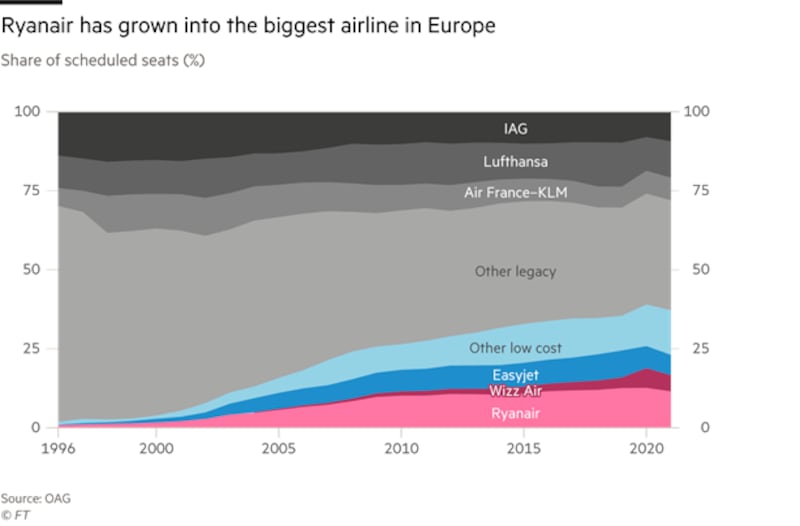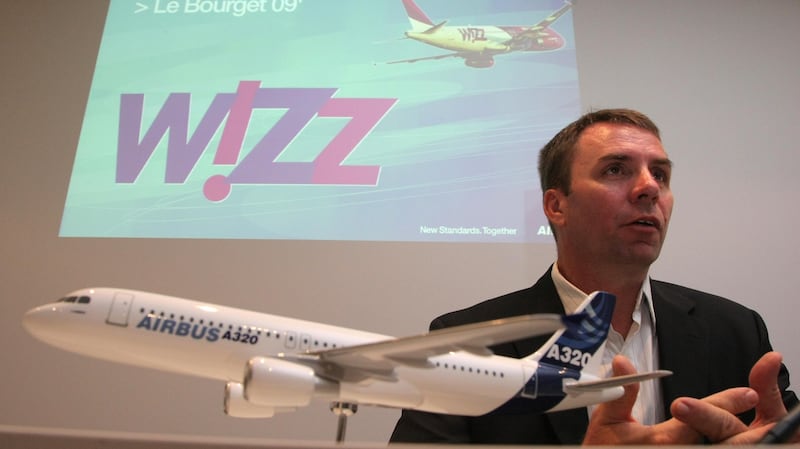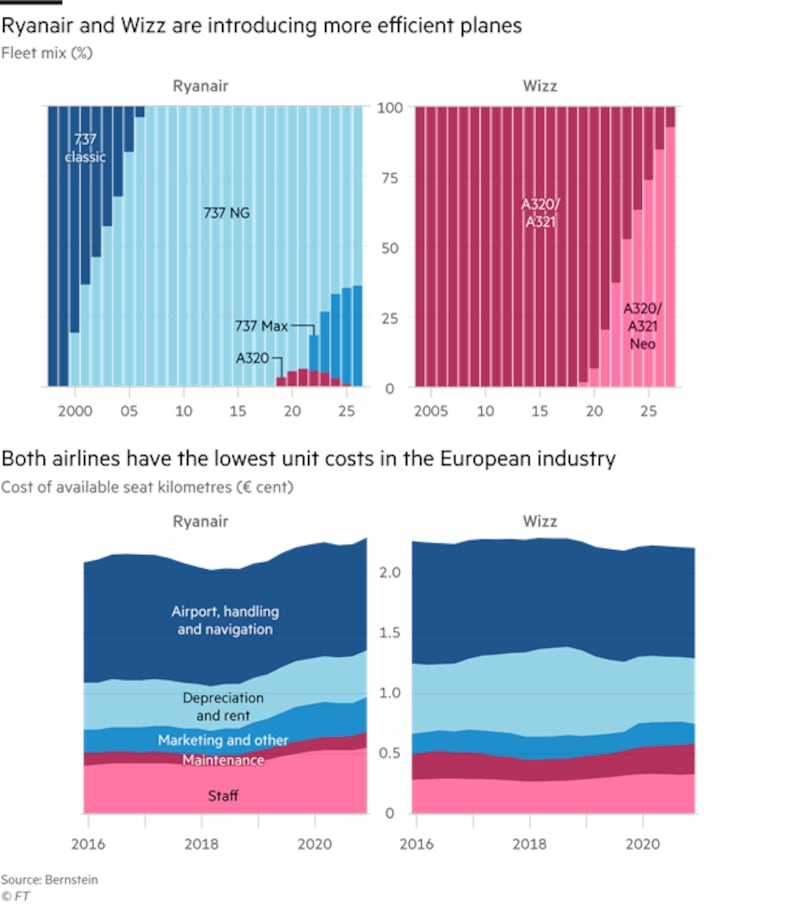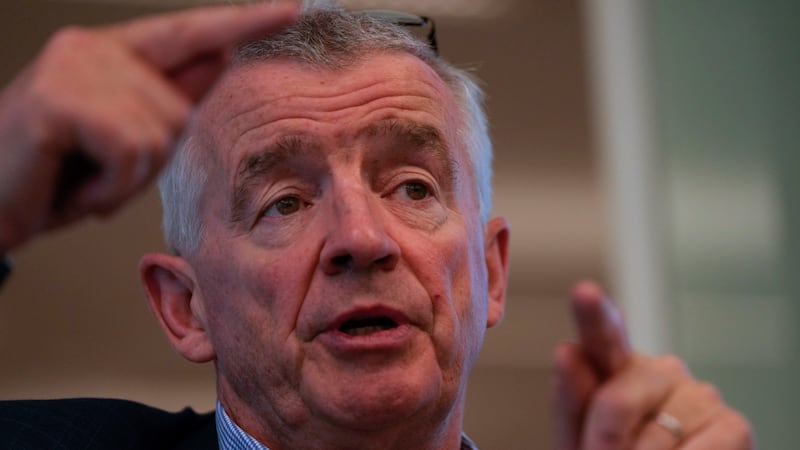For years Michael O'Leary has been the undisputed king of the European skies.
The Irish executive has grown Ryanair from a low-cost upstart into the region's dominant airline by offering cheap fares through an ultra-efficient business model that rivals have been unable to match.
But when the aviation industry emerges from the rubble of the pandemic, O’Leary will have competition.
Hungarian carrier Wizz Air has an equally low-cost business and is set on continuing a period of breakneck expansion and moving further into western Europe.
Even while the rest of their industry crumbles, O'Leary and Wizz Air chief executive József Váradi have spent the past year touting the opportunities emerging.

Both airlines are taking on new aircraft, scooping up take off and landing slots and opening new bases, while rivals with weaker balance sheets such as Alitalia and Norwegian Air Shuttle retrench or collapse.
Neither is immune to the immediate impact of the pandemic, and both companies have bled hundreds of millions of euros over the past year.
But their shares have recovered from heavy losses and are close to all-time highs, a sign that investors agree that low-cost is the future of European aviation.

For the confident O’Leary this is nothing less than “the greatest growth opportunity” in Ryanair’s 35-year history, particularly as he expects there to be a 20 per cent fall in the number of short-haul seats available from rivals in Europe over the next few years as they shrink.
Varadi, a fast-talking Hungarian, is less dramatic but equally confident. “We think we are going to be a much. . . more competitive airline and more formidable competing force post pandemic,” he said.
The scale of FTSE 250 listed Wizz’s ambition was revealed last week when shareholders were asked to back a blockbuster pay plan, which will hand Varadi a £100 million (€116.53m) bonus if he increases the airline’s share price from £48 to £120 over the next five years. That would give it a market capitalisation of nearly £12 billion, about a third smaller than Ryanair’s now.
The company listed in London at £11.50 in 2015, but its shares have rocketed as investors have welcomed the first serious low-cost competition to Ryanair to emerge and “the last great growth story in European aviation”, according to Bernstein aviation analyst Daniel Roeska.
Varadi has masterminded Wizz’s growth from the beginning. With a background as an economist and a career at Procter & Gamble and Hungarian carrier Malev behind him, he approached American investor Bill Franke in 2004 with a plan for a regional airline.
Franke, one of history’s most successful aviation investors and an early backer of Ryanair too, persuaded him to adopt the low-cost model and within six weeks Varadi had presented him with a new business plan.
“I liked József, he is a smart guy, a direct guy and we ended up making an investment,” Franke remembered.
“It has been a very successful model, and we have for a private equity fund been unusually long tenured . . .We are now at 17 years and it has been a significantly favourable investment for us.”
Wizz’s corporate structure, with a London listing, Hungarian base for cheap labour and Swiss tax registration has left it the only airline to be able to match, and in some places beat Ryanair’s ultra low cost operating model.
London-listed easyJet competes with legacy carriers at expensive airports and is not considered ultra-low-cost, while airlines such as British Airways are more reliant on long-haul and business travel.

Both Ryanair and Wizz claim to have the lowest unit cost in the industry, but analysts at Bernstein believe Wizz just has the edge, although O’Leary in his typical forthright manner dismisses this as “bullsh*t” based on theoretical future fleets.
Wizz’s growth has been fuelled by stimulating demand for flying and connecting cities in central and eastern Europe, where analysts believe there are still opportunities as economies grow.
The Hungarian airline has also moved into parts of western Europe, and has opened several bases in the UK. But to hit his target Varadi will inevitably have to move further into Ryanair’s turf.
“The jury is still out. Wizz is being more aggressive in bringing capacity back in this year, but they are not filling it to the extent Ryanair is,” said aviation consultant Edmond Rose.

O’Leary concedes Wizz has a “reasonably compelling growth story”, has respect for the way Varadi runs the business, and sees “niches” for Wizz. But he rejects the idea that it could challenge his dominant position.
“To be fair, they are good on this schlock about oh, you know, we’ve got lower costs than Ryanair, and therefore ultimately we’re going to replicate Ryanair returns over the last 20 years . . . the real difficulty for the Wizz model is that they can’t explain how the hell you can expand dramatically in western Europe when Ryanair is already there.”
While Wizz plans to take on new aircraft in the coming years to grow its fleet from about 140 to 270 planes, O’Leary has an order for more than 200 new aircraft from Boeing, which he notes is “the same size as Wizz’s whole bloody fleet” and will leave Ryanair with 600 planes by 2026.
Varadi is more diplomatic and has been briefing investors that there is space for both to grow.
“I think the real question is what is going to happen to the others who don’t have the cost base and the capacity to grow,” he said. “I am sure Ryanair will do great coming out of the pandemic, but I think we will be doing even better.”
Arguably, the key question facing Wizz is whether it can preserve its low-costs as it moves into western European airports, with pressure over unionisation and wages, challenges that Ryanair had to face as it matured.
For Franke, competition is inevitable. He counts O’Leary as a friend, but added: “We are not intimidated or afraid of Ryanair.”
Even O’Leary believes Wizz is a better proposition for an investor than any other airline in Europe. Except one, of course. “I would say to anybody investing in Wizz, why are you not investing in Ryanair?”. – Copyright The Financial Times Limited 2021









